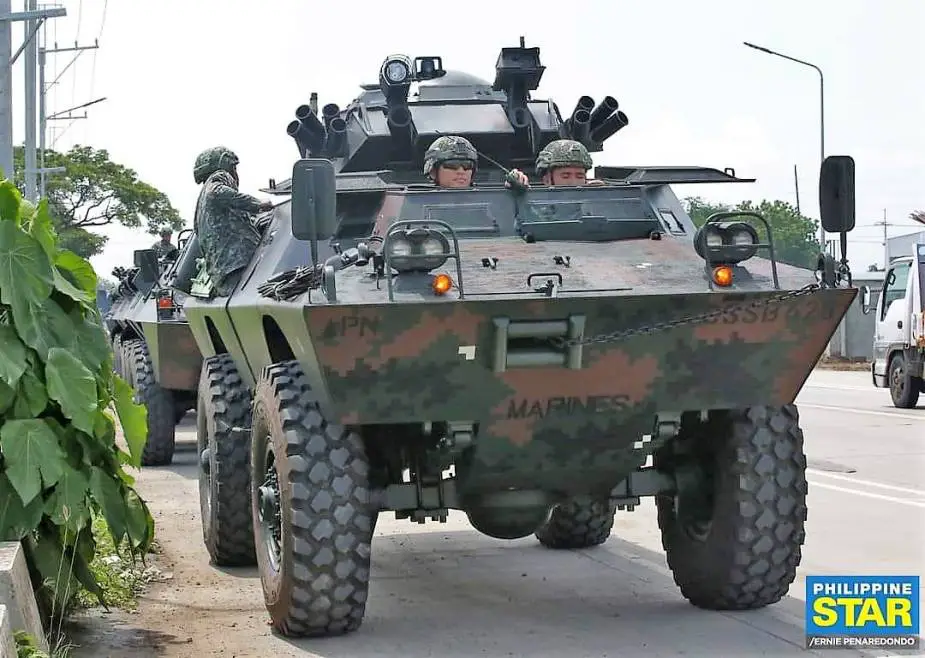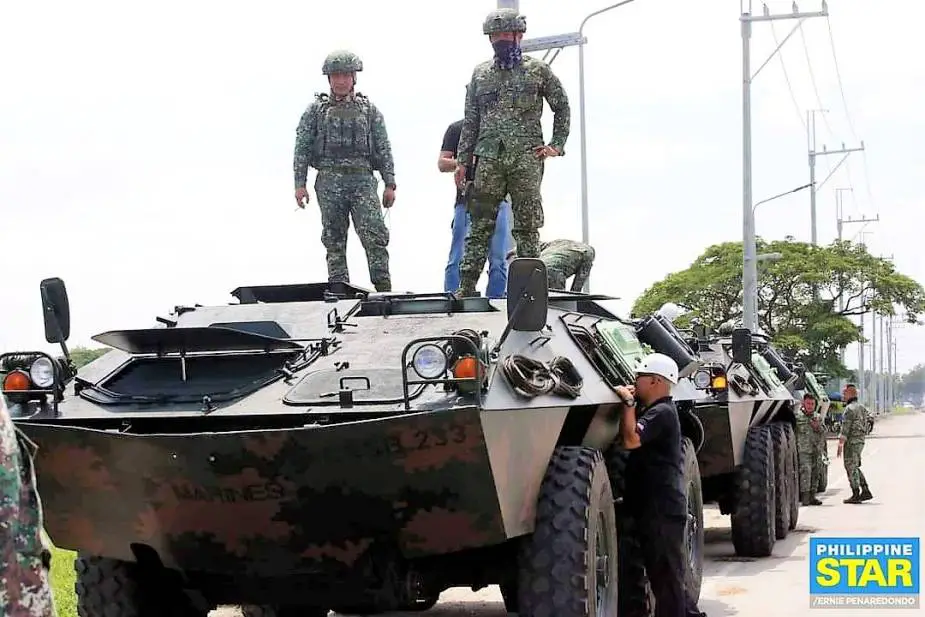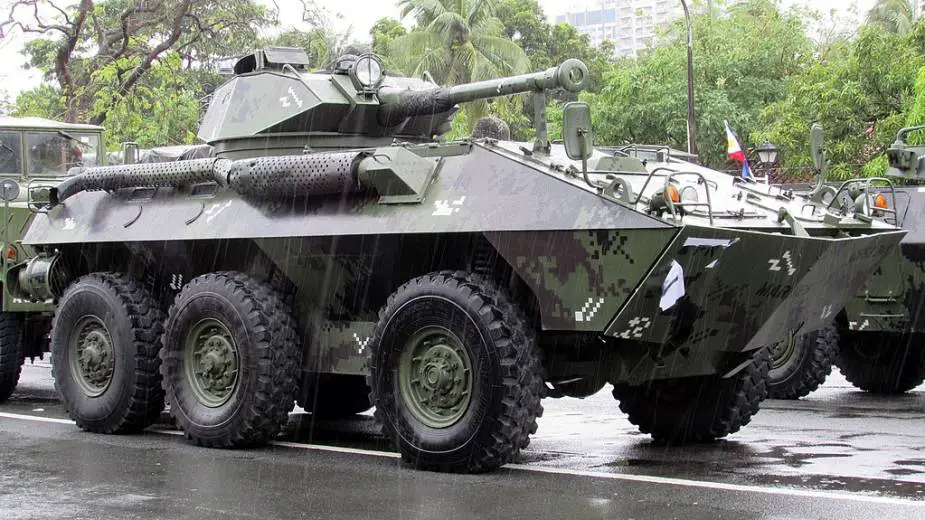Breaking news
Philippine Marine Corps conducted road testing of upgraded V-150 and V-300 Commando armored vehicles.
According to Defense Studies, the Philippine Marine Corps recently conducted road testing of their V-150 and V-300 Commando armored vehicles in Bulacan on June 7. This testing was carried out as part of the evaluation process for these vehicles, which have recently undergone upgrades under the Light Armor System Upgrade (LARSU) project. The LARSU project is a collaborative effort between the Philippine Marine Corps, the Philippine Air Force, and India's Larsen & Toubro, implemented during the Horizon 2 phase of RAFPMP.
Follow Army Recognition on Google News at this link

Newly upgraded V-150 of the Philippine Marine Corps (Picture source: Philippine Star)
As part of the upgrade, the LARSU Mobility Upgrade focuses on various components, including the power pack, cooling system, driver's control, driveshafts, wheel and tire assembly, steering assembly, electrical systems, suspension, brakes, and fuel system. The LARSU project also encompasses turret upgrades, although it appears that the turret upgrades for the V-300 may not have been completed yet. Consequently, during the testing on June 7, turretless vehicles were used.
The Cadillac Gage Commando, frequently denoted as the M706 in U.S. military service, is an American armored car designed to be amphibious. It was engineered by Cadillac Gage specifically for the U.S. Military Police Corps during the Vietnam War as an armed convoy escort vehicle. The Commando was one of the first vehicles to combine the traditionally separate roles of an armored personnel carrier and a conventional armored car, much like the Soviet BTR-40. Its notable height, amphibious capability, and the waterproofed engine allowed American crews to fight effectively in the jungles of Vietnam by observing their opponents over thick vegetation and fording the country's deep rivers.
The Commando was eventually produced in three distinct marks: the V-100, V-150, and V-200, all of which were modified for a number of diverse battlefield roles. An unlicensed copy of the Commando series, the Bravia Chaimite, was also manufactured in Portugal. After the American military disengagement from Vietnam, the Commando series was gradually retired from active U.S. service. It was superseded in the Military Police Corps by the derivative M1117 Armored Security Vehicle during the 1990s. The Philippine Armed Forces initially had 185 units in their inventory.

Newly upgraded - but still turretless - V-300 of the Philippine Marine Corps (Picture source: Philippine Star)
The Cadillac Gage LAV-300, originally named the V-300, is a family of American light armored vehicles (LAVs) including up to 15 configurations. It was originally created and designed by CG as a private venture project. From 2020, the vehicle and its derivatives were no longer being marketed by Textron. The Philippine Marine Corps is believed to still operate 24 vehicles from the original 36 in 1990. In 2001, Floro International Corporation was contracted to modernize LAV-300s in use by the Philippine Marine Corps. Another upgrade project was announced in 2015 with a contract amounting to $784,000) to upgrade the LAV-300's turret systems. Another was launched in 2018 with a bid awarded in 2019 to Larsen & Toubro to replace worn-out components.
The LAV-300 has a seating capacity for three crewmembers, consisting of a driver, commander and gunner, and nine passengers. Its weight is at 14,696 kg. with a length of 6.40 m and a width of 2.54 m. The height is at 2.7 m with a turret and at 1.98 m to the hull. It can go up to 105 km/hr with a range of 925 km. It can reach 65 mph (105 km/h), and can be air-transported by a C-5 Galaxy, C-141 Starlifter, C-17 Globemaster III and a C-130 Hercules. Some versions can be air-transported by CH-53E Super Stallion.

V-300 (LAV-300) of the Philippine Marine Corps (PMC) during the 2018 Kalayaan Parade in Luneta (Picture source: Wikipedia/Rhk111)
Defense News June 2023




























